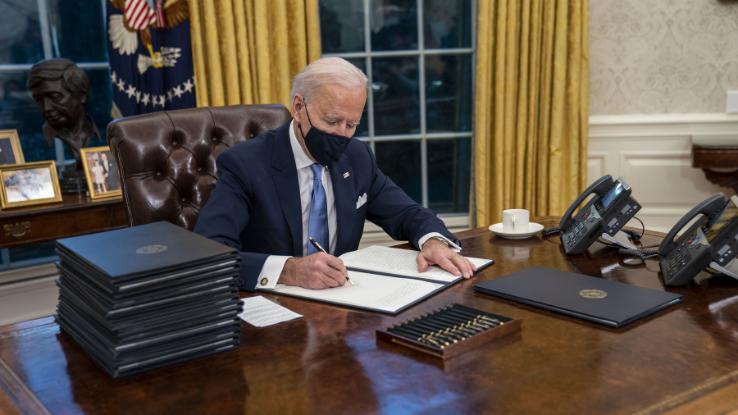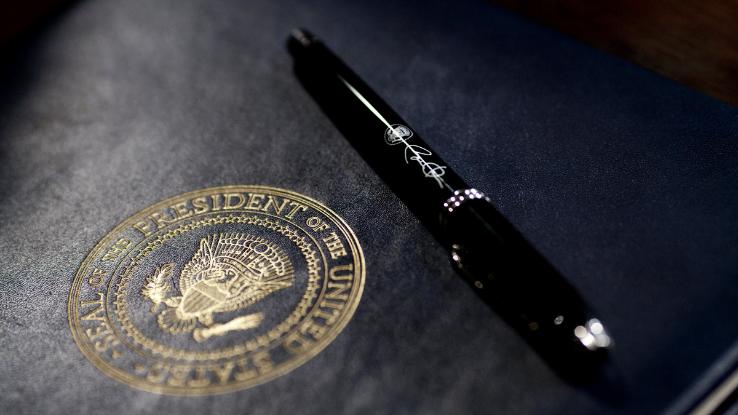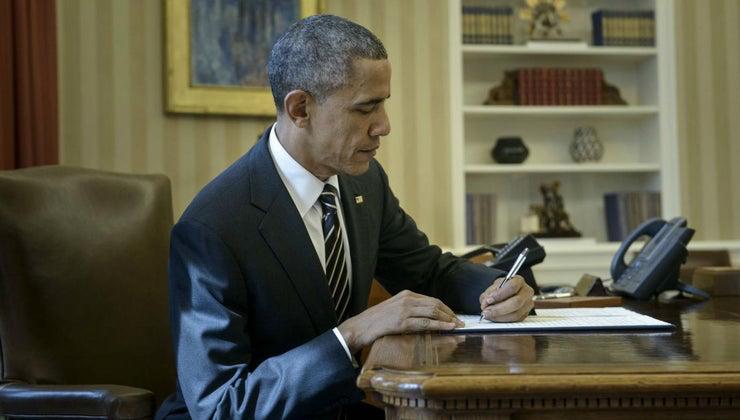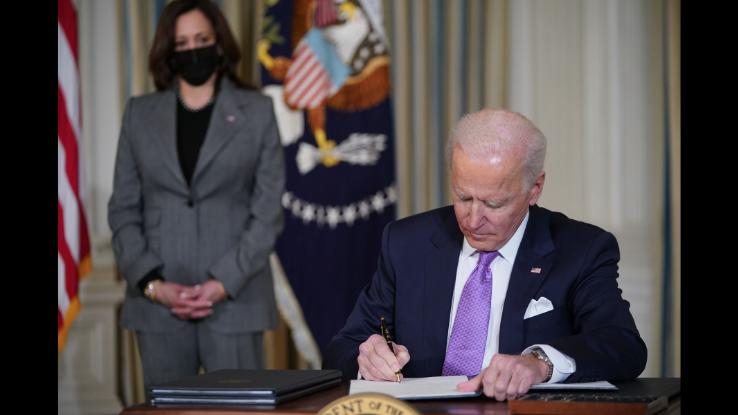How Does a Presidential Executive Order Work?

On January 20, 2021, President Joe Biden was sworn into office around midday and, by the time the sun was setting over the White House, he was already hard at work in the Oval Office, where he signed 15 executive orders. By January 29, President Biden’s total stood at 22 executive orders — plus 10 presidential memos and four proclamations. According to The American President Project, this is more than his most recent predecessors.
No matter the president, executive orders remain a somewhat contentious topic. Not only do they set a precedent in terms of presidential power, but these directives can be used to help an administration spotlight the key tenets of its agenda. With this in mind, let’s take a look at the history of executive orders in the United States and how the Biden administration has implemented them thus far.
What Is an Executive Order?
So, what exactly is an executive order? To put it simply, it’s a signed, written and published directive, issued by the President of the United States, that manages operations of the federal government. The actual document is broken into five parts: the heading, the title, the introduction, the body of the order and the signature. Additionally, instead of a name, each order is assigned a number.

Executive orders are usually designed to perform one of several functions. For example, it is common for such directives to address governmental management issues, particularly within the executive branch itself or other federal agencies. It is also possible for executive orders to aid the president in living up to constitutional requirements or duties. Nonetheless, the president must ensure that every component of the order is both legal and constitutional. Additionally, the president has the power to change or retract an order issued during their presidency, and there is no time constraint for doing so. Similarly, succeeding presidents can either keep pre-existing orders, revoke them or issue new orders superseding old ones.
Although they’re often the most high profile, executive orders aren’t the only presidential documents at the leader’s disposal. There are also proclamations, which “communicate information on holidays, commemorations, federal observances and trade,” and administrative orders, which encompass memos, letters, notices and other administrative messages (via the American Bar Association). However, despite their differences, all three of these document types are published in the Federal Register, the journal of the federal government that’s meant to inform the general public of daily goings-on.
How Is Presidential Executive Order Power Checked?
The most contentious aspect of executive orders is that they are treated like “instant laws.” Although executive orders have the force of law, they aren’t technically legislation, which means Congress doesn’t need to approve them. Although an article from Quartz notes that “the authority to issue these executive actions isn’t outlined in the Constitution, meaning they can be tough to define,” executive orders have been deemed completely constitutional since George Washington’s time in office.

In fact, Article Two of the U.S. Constitution grants the president the authority to use their discretion when it comes to enforcing the law or managing the executive branch and its resources. So, even though it’s legal, how is this presidential power checked? On the Congressional side, overturning an ill-received executive order isn’t easy; instead, Congress often passes legislation that defunds executive orders its members aren’t fond of, or else renders these orders difficult to execute. In fact, as mentioned above, only a sitting president has the power to overturn an executive order. Like legislation, executive orders are, however, subject to judicial review.
In fact, the Supreme Court has struck down such directives in the past. In 1952, President Harry Truman’s Executive Order 10340 came under fire when the president, fearing a steelworker strike, ordered his secretary of commerce to seize control of a majority of the country’s steel mills. In the end, the Supreme Court determined that the president lacked the “constitutional or statutory power to seize private property.” Where does the Court stand on other contentious directives? Well, the Court allowed President Ronald Reagan’s series of orders surrounding the Iranian Hostage Crisis to stand — and, more recently, did not choose to hear a suit filed against President Barack Obama for an executive order related to the implementation of the Affordable Care Act (ACA).
President Biden’s Use of Executive Orders So Far
According to the American Bar Association, every American president has issued at least one executive order during their presidency, though many in modern history have issued hundreds over the course of their terms in office. As mentioned above, executive orders are numbered consecutively and, at the end of January 2021, President Biden signed order number 14008 — so, yes, it has been a popular way to exercise presidential power since 1789.

Still, by the end of January, Biden had signed “more than double the amount any president in modern U.S. [history] had signed in their own first months,” Dr. Adam Warber, a Clemson political science professor, told People. “Although the number is large…it is not a huge surprise because Democrats want to reverse a good portion of the policy actions that were undertaken by the Trump administration.” Dr. Warber also cites that an impetus behind Biden’s executive orders likely relates to the “high polarization in Washington politics,” an aftereffect of the Trump era that the country will likely be feeling for quite some time. It is a balancing act, however: President Biden has spoken countless times about unity, about working for all Americans, but an executive order is often viewed as divisive, whether that’s a fair judgement or not.
As of early February, President Biden’s executive actions have touched on a wide range of topics, from immigration, transgender rights and racial justice to climate change and COVID-19 relief-related directives. Notably, President Biden has used presidential powers to preserve Deferred Action for Childhood Arrivals (DACA) and rejoin the Paris climate agreement. Additionally, he has issued executive orders to repeal the Trump administration’s bigoted travel ban on countries with majority Muslim populations; revoke the permit for the Keystone XL pipeline; and take more measures to fill supply shortfalls and combat COVID-19 with the Defense Production Act. On the other hand, President Biden has made it clear in the past that he feels using an executive order to cancel student loan debt in totality to be a “potential abuse of his executive powers.” Whether you agree with the directives or not, it’s clear that executive orders are often a clear, concise and expedient way to create change.





